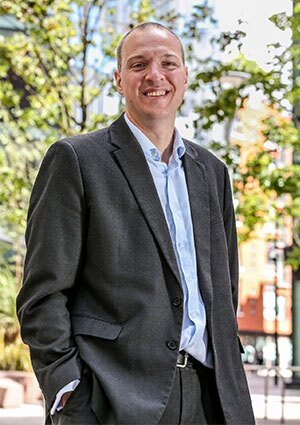The life of a structural engineer
The routes into a career in structural engineering have changed significantly in the past two decades. My path into the industry was very traditional – A Levels, degree, master’s, job – but there are now numerous options, and we see ever-increasing numbers coming through alternative pathways such as part-time degrees and apprenticeships.
There is still a perception with some people within the industry that a traditional full-time university degree is an essential part of a structural engineer’s education, but from my perspective, this isn’t the case – using our team as an example, we have some exceptional talent that has come through apprenticeships or a part-time degree route.
The opportunities to learn within a business are vast. Most engineers will start on smaller and simpler projects such as residential schemes, but as you progress, steel frame structures can provide a more complex challenge. As you progress, you get more contact with and exposure to industry colleagues, as well as more time on site with clients.
It’s important when nurturing those new into the industry that they get exposed to different types of work. If not, it can breed boredom and you risk them becoming pigeonholed in one specific area, which isn’t beneficial for either the fledgling engineer or the company they work for.

Getting out to sites and meeting clients is a massive opportunity for those just starting on their journey, and I think this is something that really comes through when working for an SME rather than one of the industry giants where new recruits may find themselves chained to their desk for the first few years.
Roles and responsibilities
A key part of being a structural engineer is ensuring that we are coordinating and collaborating with the other disciplines such as the architects and MEP. Early engagement on complicated schemes can help, and when this isn’t the case, you really notice the limit to the value you’re able to offer – be that in terms of cost savings or carbon emissions for the end product.
Another responsibility that falls to structural engineers is ensuring that the buildability of any given project is maintained, minimising risks to the client and ensuring that there are no nasty surprises when it gets to site. It’s about taking the designs from the architect and ensuring that it can work not just from a structural perspective, but also in terms of cost.
Time and cost are always the biggest challenges for projects. Programmes will naturally be squeezed, which can limit collaboration time, but it’s about being honest with clients and telling them what is possible at what cost, and a good client will listen and allow time for the project team to coordinate – you can’t be afraid to push back when a client is being unreasonable.
Challenges and opportunities
An area where structural engineers have a huge impact is the net-zero agenda. If given the necessary time on a project, structural engineers have as big an opportunity as any other part of the construction industry to make a real difference on this front. There is a huge range of sustainable replacement products for some of the more carbon-intensive materials used in construction, and structural engineers can provide the opportunity to specify them. However, it’s the asset owners and developers that have the power to increase quality and sustainability by spending a little more on earlier engagement, so it’s about ensuring that you are given as much chance as possible to make an impact.
The planning system is also a significant challenge, and it is providing major issues across the industry, as it squeezes timeframes for projects to be delivered once planning approval is given. While structural engineers aren’t directly involved in this, the knock-on effect throughout industry is significant.
Looking to the future
Across the built environment industry, we are facing many unprecedented challenges, from the skills shortage to the race to Net Zero. But these challenges can be overcome if there is a concerted effort to change and adapt perspectives and processes. It’s more important than ever that we show the next generation that there is hope and dynamism within the sector.
Interestingly, structural engineers aren’t necessarily doing anything different now to what they did when I started in the industry 20 years ago. However, the way in which we go about it – particularly with the improvements made through BIM – has made the industry more efficient.
The laws of physics don’t change – a piece of steel is a piece of steel – but the benefits of being increasingly digitised are clear in terms of efficiency and cost saving. Unfortunately, in my opinion, this has led to some more traditional parts of the role being lost, for example sketching and hand calculations, and the increased speed of delivery can – at times – mean a loss of quality and creativity.
Ultimately, it is incumbent on us as structural engineers to take a real look at the skills we have both within the industry currently and coming in fresh. The skills shortage across the built environment has the potential to be crippling, and it’s the responsibility of everyone currently in the industry to engage with schools, colleges, and universities to help solve this.
By Chris Pollett
Chris Pollett is regional director at Rodgers Leask, a successful, independent engineering consultancy, established in Derby almost 40 years ago. From its offices throughout the UK, it offers civil, structural, traffic and transport and geo-environmental services to clients nationwide.
